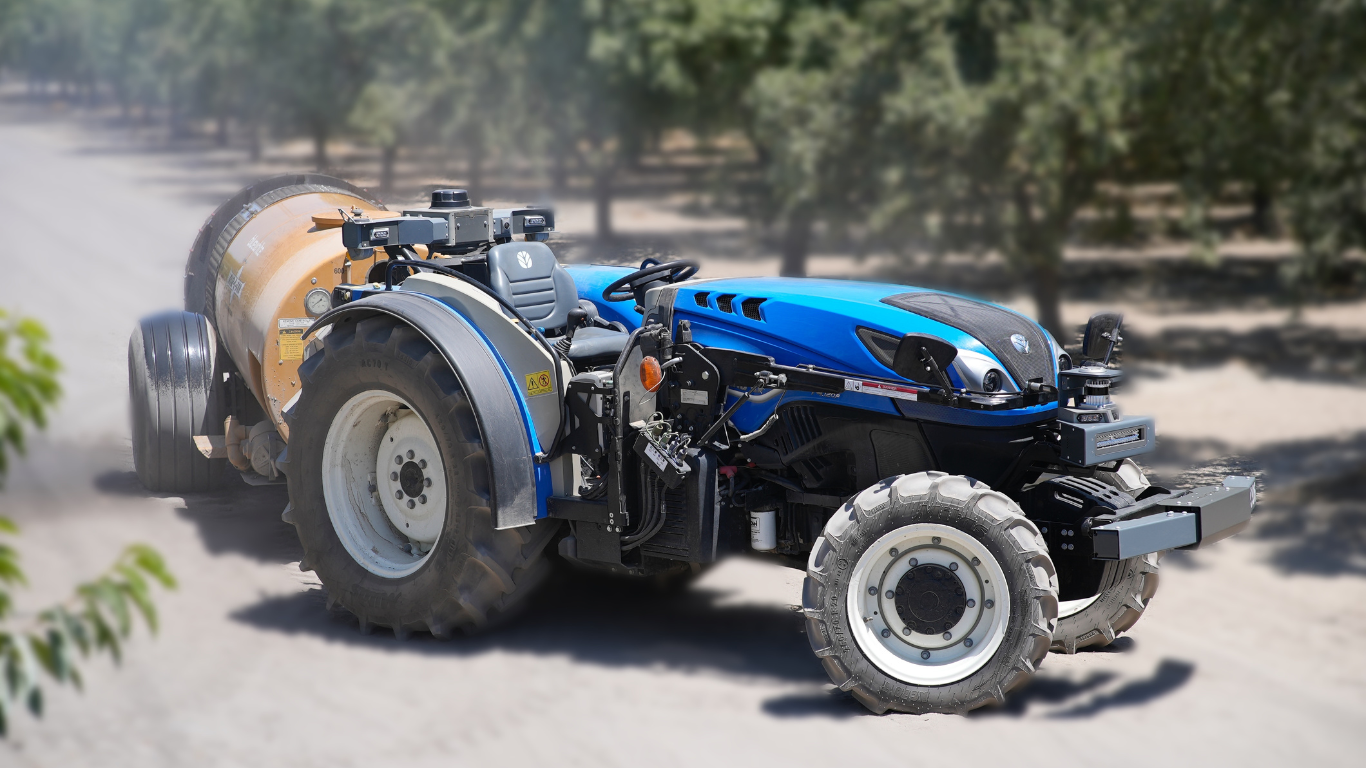Introduction: The Foundation of Farm Autonomy
Autonomous farming is built on a foundation of advanced navigation technologies. These systems allow equipment to move with precision, adapt to changing conditions, and perform tasks consistently without constant human input. From sensors that detect obstacles to AI that plans efficient routes, navigation is the critical link between autonomy and real-world results.
This article breaks down the key technologies that make autonomous navigation in agriculture possible, and how Bluewhite applies them in the field.
LiDAR: Mapping the Environment in 3D
What it is:
LiDAR (Light Detection and Ranging) uses laser pulses to measure distances and create a detailed three-dimensional map of the surroundings.
Why it matters:
- Detects obstacles and row structures in all light conditions
- Supports accurate navigation in complex environments
- Provides consistent data regardless of crop height or density
In Bluewhite’s GEN 4 system, LiDAR plays a central role in enabling safe and efficient path planning.
Computer Vision and Cameras: Seeing the Details
What it is:
High-resolution cameras capture visual information that AI systems analyze to understand the environment, identify objects, and monitor field conditions.
Why it matters:
- Detects fine details like canopy edges and ground markers
- Helps verify LiDAR data for greater accuracy
- Supports adaptive application rates in spraying and spreading
By combining camera feeds with AI algorithms, Bluewhite enhances navigation precision and operational control.
GPS and RTK Positioning: Precision at the Centimeter Level
What it is:
Global Positioning System (GPS) with Real-Time Kinematic (RTK) correction provides location data accurate to within a few centimeters.
Why it matters:
- Ensures exact repeatability for every pass
- Eliminates overlaps and gaps in coverage
- Allows multiple machines to operate in coordinated patterns
Bluewhite’s systems use RTK to achieve consistent results across fields and over multiple seasons.
AI Path Planning Algorithms: The Brain Behind the Movement
What it is:
AI software processes sensor data and determines the most efficient route for the machine to follow.
Why it matters:
- Optimizes travel time and fuel use
- Adjusts routes in real time when obstacles are detected
- Coordinates multiple machines to work together efficiently
In the Compass Fleet Management Platform, AI path planning works hand-in-hand with scheduling tools to streamline operations.
Sensor Fusion: Combining Data for Smarter Decisions
What it is:
Sensor fusion integrates data from LiDAR, cameras, GPS, and other sensors into a single, coherent understanding of the environment.
Why it matters:
- Improves reliability by cross-verifying sensor inputs
- Enables smoother navigation in challenging conditions
- Reduces errors caused by individual sensor limitations
This multi-layered approach allows Bluewhite’s autonomy to perform consistently in varying terrain and crop types.
Bluewhite’s Integrated Approach to Navigation
Bluewhite combines all of these technologies in a way that is practical for growers:
- Pathfinder Retrofit Kit upgrades existing tractors with the full navigation suite
- GEN 4 Autonomous System uses advanced AI and perception tools for field-ready autonomy
- Compass Fleet Management Platform coordinates and monitors every task from a single interface
By designing these technologies to work together, Bluewhite ensures autonomous navigation is accurate, safe, and easy to manage.
FAQs: Key Technologies in Autonomous Navigation
Q: Is GPS alone enough for autonomous navigation?
No. GPS is essential, but additional sensors like LiDAR and cameras are required for accuracy and safety.
Q: Can these technologies adapt to different crops and terrains?
Yes. Bluewhite’s systems are designed to handle a wide range of permanent crops and varying field conditions.
Q: How do these systems handle obstacles?
Sensor fusion allows the system to detect and respond to obstacles in real time, either by stopping or rerouting.
Conclusion: Precision That Powers Autonomy
The success of autonomous farming depends on precise navigation, and that precision comes from a combination of advanced sensors, AI algorithms, and integrated management platforms. By bringing these technologies together, Bluewhite delivers autonomy that works reliably in the real world, helping growers improve efficiency, reduce costs, and operate more sustainably.

